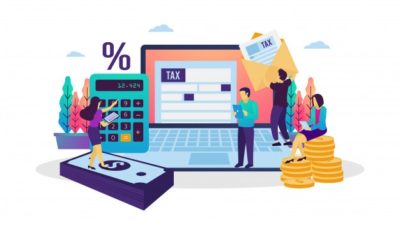You and Your Retirement Funds
Many people are dependent on their company retirement fund for their future financial well-being. For most people their retirement fund represents their biggest saving.
Sadly most people do not make an effort to understand the benefits they or their dependants can expect when they retire, if they resign from their companies or if they die or become disabled.
Your fund provides you with basic information about how it works and the benefits you are entitled to but it’s always a good idea to get an update on what’s happening with your retirement fund.
Rules of a fund & Rule Amendments
The rules of a fund should include full details of the fund and they shall bind the fund, employer, members, and officers of the fund.
Rule amendments, which affect the rights/benefits of members, only apply to those members who join the fund after the date of such an amendment.
Dissolution & Cancellation of a registered fund
A liquidator, who is approved by the Regulatory Authority, dissolves a fund. The liquidator compiles assets and liabilities accrued to the fund. The actuary, if required, provides calculations of the benefits due to each member.
To what kind of fund do you belong?
The structure of the fund, what you receive in benefits and how the benefits are taxed depends on whether you belong to pension fund or a provident fund.
Pension fund contributions are tax deductible up to a maximum of 15 percent of your earnings.
Pension funds can be divided into two broad categories, namely, those with defined benefits and those with defined contributions.


Defined Benefit Funds
If you belong to a defined benefit fund, your employer effectively guarantees the fund’s promise to pay a specified amount of money to you when you retire. This is usually in the form of a monthly pension. This promise by the fund is calculated according to a certain formula, which is based on factors such as the number of years you belonged to the fund and your salary at, or close to, retirement.
Defined Contribution Funds (Most Common)
A defined contribution fund is more like a savings account into which contributions of a specific amount are made every month.
This investment grows over the years, although you don’t know what your end benefit will be until you retire. This is because the end benefit equals the total contributions (yours, if any, and your employers) plus return on the investments. You also often have to bear the risk that, if expenses rise, the amount invested for your benefit drops.
If the investments perform well, you will receive more money and if it performs poorly, you will have less at retirement. This means that you carry the investment risk.
How much money is going into your fund every month?
To build up a retirement nest egg, you and your employer contribute money into the retirement fund. The money is invested and you get to share in the investment returns.
Most funds today tend to be contributory funds with both the member and the employer contributing to the fund. Usually employee’s contributions are lower than the employer’s contribution.
Some funds are non-contributory, which means that only your employer makes contributions to the fund on your behalf – resulting obviously in a smaller nest egg.
The maximum amount an employer may contribute to your retirement fund for tax-deductible purposes (in your employer’s hands) is 20 percent of your salary. Fund contributions (both member and employer) differ from one employer to another.
Bear in mind that in most cases your full contribution to a retirement fund is not available for investing. The fund pays investment costs and the costs of an administrator out of the contributions. Some funds will use a portion to fund the risk benefits (life and disability cover) and only the rest is invested. Some employers opt to bear the costs of running the fund independently of contribution payments made thus leaving all contributions to be invested for your benefit.
Additional Voluntary Contributions
Whilst the employer must make contributions into a company pension fund/scheme, the member’s contribution is based on whether or not the scheme is contributory.
A member may make additional voluntary contributions (over and above the stipulated contribution of a contributory fund) into an employer fund which would then be credited directly into their own account thus increasing the value of their pension.
Free Standing Additional Voluntary Contributions Funds
These are licensed stand alone additional voluntary contributions funds that anyone may contribute into. The purpose being the same as for additional voluntary contributions (to augment pension savings) although one may use them as a sole retirement plan as well.
How much money do you get when you retire?
If you have a pension fund, at retirement, you can take a maximum of one third of the total benefit in cash and the rest is paid as a monthly pension (or annuity). However, if the annuity is less than P 5000 a year you may take it as a single cash payment.
A provident fund, allows one to take all their money as a tax free cash lump sum at retirement. Some provident funds will allow you to buy a pension instead of taking the full cash amount as a lump sum, similar to a pension fund.
Retirement age is stipulated in the rules together with the minimum and maximum age limits.
What about tax?
Another difference between a pension fund and a provident fund is the way in which the funds are taxed.
You should remember that the tax advantages only apply to approved funds, in other words, to those funds that meet certain criteria stipulated by the Regulator (NBFIRA) and Commissioner General of Botswana Unified Revenue Service (BURS).
There are three distinct stages of a retirement fund and different tax rules apply.
Tax on contributions:
* Employer contributions: In the case of both pension and provident funds, your employer may deduct a contribution of up to 20 percent of your salary.
* Member contributions to a pension fund: Up to 15 percent of your salary is tax deductible.
* Member contributions to a provident fund: Your monthly contributions to a provident fund are not tax deductible.
Tax on investment build-up
The interest and net rental income earned by retirement funds is also tax free.
Tax on benefits
* Pension Fund: You have the option of taking up to one third of your benefit as a tax free cash lump sum at retirement and the rest has to be used to buy an annuity or monthly pension. There is one exception to the one-third maximum lump sum rule. If you receive a total monthly pension of less than P 5000 a year, you may opt to take your entire retirement benefit as a lump sum.
The monthly annuity that you receive is taxed in your hands at your marginal rate (in the same way that your income is taxed). So what you pay in total will depend on your total income. You may, for example, receive income from investments that you have made such as rental from property or from occasional work such as consulting – all of this will form part of your taxable income.
* Provident Fund: The money that you contribute to a provident fund over the years cannot be deducted from tax, but the benefits are free of tax.
Who is managing the investments of your fund?
Your Board of Trustees would have selected service providers to manage the administration and investments of your fund:
The administrator would be responsible for the record keeping and accounts of your pension fund whilst the consultant (usually your administrator as well) ensures compliance of the fund to all regulatory requirements.
The asset manager(s) would invest your funds in appropriate instruments judging from the profile of the membership (which indicate the time by which the funds would be required).
What is your retirement fund worth?
It is important that all registered retirement funds disclose certain minimum information to members. At the very least, your retirement fund should give you a benefit statement showing the value of your fund once a year. Your fund can communicate benefit information to you more frequently, but once a year is the minimum.
The kind of information that the benefit statement should contain includes, your total contributions for the reporting period, the date you joined the fund, the projected benefit that you are entitled to at normal retirement date, what you are entitled to at death, what you would get if you stopped working because of ill health and what your withdrawal benefits are.
Do you get any money if you become disabled in an accident while working?
In addition to providing an income for your old age, a retirement fund will also pay out if you have to stop work because of ill health. Usually you do not get disability or ill health cover from your retirement fund but rather ill health early retirement – which will kick in at any age once illness / disability is confirmed medically.
Will your family be okay when you die?
Some employers provide death benefits to your family if you die while you are employed. In some instances, you may even get a funeral benefit, which can be used by your family to cover the cost of your funeral or by you to cover the cost of the burial of one of your family members.
Funeral cover is usually not provided for from within a retirement fund, but your employer may contract with an insurer outside the fund. The large number of members involved could make such funeral cover cheaper than if you took out a funeral policy on your own.
Death benefits from your retirement fund do not automatically form part of your estate and importantly, the trustees of your fund have total discretion and may even override your wishes in terms of allocation.
They have to follow a process in deciding who gets your death benefits.
Although you may nominate a beneficiary who is not dependent on you, the trustees must take account of any of your dependants when deciding how to split any lump sum payable on your death. In the absence of any dependents and nominees, the money will go to your estate.
What happens if you resign from your job?
The Income Tax Act permits one to withdraw funds up to 25% or P5, 000, whichever is the greater, at withdrawal from an employer. These funds are fully taxed as one is seen to have contravened the ‘retirement’ contract with the tax man who would have permitted tax free growth on the funds.
Those moving voluntarily between employers (usually attracted by higher income) are strongly advised to refrain from withdrawing their pension benefits to enable them to grow through compounded interest resulting in a better nest egg at retirement.
What happens if you are retrenched from your job?
Retrenchment is not seen as one’s choice and as such the benefit one is permitted to withdraw from the pension fund increases to a maximum of 33% or P5, 000, whichever is the greater, with only 2/3 of the withdrawn amount taxed.
What about the rules of your fund?
The way your fund works should be spelt out in the rules of your fund and it is your right to view a copy of the rules. But be warned, the rules are not always written in easy to understand language.
A member booklet summarizing the rules of your fund will be provided. This is a good guideline to understanding your pension fund.
Remember that you are entitled to information about your retirement fund. If you are having trouble getting information from your fund, approach your member trustees for support.
” background_blend_mode=”overlay” first=”true” last=”true” min_height=”” hover_type=”none” link=”” border_position=”all”]
Sadly most people do not make an effort to understand the benefits they or their dependants can expect when they retire, if they resign from their companies or if they die or become disabled.
Your fund provides you with basic information about how it works and the benefits you are entitled to but it’s always a good idea to get an update on what’s happening with your retirement fund.
To what kind of fund do you belong?
Appointment and functions of Regulatory Authority
The Minister of Finance appoints the Regulatory Authority Board who then appoints a Chief Executive Officer.
Defined Benefit Funds
If you belong to a defined benefit fund, your employer effectively guarantees the fund’s promise to pay a specified amount of money to you when you retire. This is usually in the form of a monthly pension. This promise by the fund is calculated according to a certain formula, which is based on factors such as the number of years you belonged to the fund and your salary at, or close to, retirement.
Defined Contribution Funds (Most Common)
A defined contribution fund is more like a savings account into which contributions of a specific amount are made every month.
This investment grows over the years, although you don’t know what your end benefit will be until you retire. This is because the end benefit equals the total contributions (yours, if any, and your employers) plus return on the investments. You also often have to bear the risk that, if expenses rise, the amount invested for your benefit drops.
If the investments perform well, you will receive more money and if it performs poorly, you will have less at retirement. This means that you carry the investment risk.

How much money is going into your fund every month?
To build up a retirement nest egg, you and your employer contribute money into the retirement fund. The money is invested and you get to share in the investment returns.
Most funds today tend to be contributory funds with both the member and the employer contributing to the fund. Usually employee’s contributions are lower than the employer’s contribution.
Some funds are non-contributory, which means that only your employer makes contributions to the fund on your behalf – resulting obviously in a smaller nest egg.
The maximum amount an employer may contribute to your retirement fund for tax-deductible purposes (in your employer’s hands) is 20 percent of your salary. Fund contributions (both member and employer) differ from one employer to another.
Bear in mind that in most cases your full contribution to a retirement fund is not available for investing. The fund pays investment costs and the costs of an administrator out of the contributions. Some funds will use a portion to fund the risk benefits (life and disability cover) and only the rest is invested. Some employers opt to bear the costs of running the fund independently of contribution payments made thus leaving all contributions to be invested for your benefit.
Additional Voluntary Contributions
Whilst the employer must make contributions into a company pension fund/scheme, the member’s contribution is based on whether or not the scheme is contributory.
A member may make additional voluntary contributions (over and above the stipulated contribution of a contributory fund) into an employer fund which would then be credited directly into their own account thus increasing the value of their pension.
Free Standing Additional Voluntary Contributions Funds
These are licensed stand alone additional voluntary contributions funds that anyone may contribute into. The purpose being the same as for additional voluntary contributions (to augment pension savings) although one may use them as a sole retirement plan as well.
How much money do you get when you retire?
If you have a pension fund, at retirement, you can take a maximum of one third of the total benefit in cash and the rest is paid as a monthly pension (or annuity). However, if the annuity is less than P 5000 a year you may take it as a single cash payment.
![]()
A provident fund, allows one to take all their money as a tax free cash lump sum at retirement. Some provident funds will allow you to buy a pension instead of taking the full cash amount as a lump sum, similar to a pension fund.
Retirement age is stipulated in the rules together with the minimum and maximum age limits.
What about tax?
Another difference between a pension fund and a provident fund is the way in which the funds are taxed.
You should remember that the tax advantages only apply to approved funds, in other words, to those funds that meet certain criteria stipulated by the Regulator (NBFIRA) and Commissioner General of Botswana Unified Revenue Service (BURS).
There are three distinct stages of a retirement fund and different tax rules apply.

Tax on contributions:
* Employer contributions: In the case of both pension and provident funds, your employer may deduct a contribution of up to 20 percent of your salary.
* Member contributions to a pension fund: Up to 15 percent of your salary is tax deductible.
* Member contributions to a provident fund: Your monthly contributions to a provident fund are not tax deductible.
Tax on investment build-up
The interest and net rental income earned by retirement funds is also tax free.
Tax on benefits
* Pension Fund: You have the option of taking up to one third of your benefit as a tax free cash lump sum at retirement and the rest has to be used to buy an annuity or monthly pension. There is one exception to the one-third maximum lump sum rule. If you receive a total monthly pension of less than P 5000 a year, you may opt to take your entire retirement benefit as a lump sum.
The monthly annuity that you receive is taxed in your hands at your marginal rate (in the same way that your income is taxed). So what you pay in total will depend on your total income. You may, for example, receive income from investments that you have made such as rental from property or from occasional work such as consulting – all of this will form part of your taxable income.
* Provident Fund: The money that you contribute to a provident fund over the years cannot be deducted from tax, but the benefits are free of tax.
Who is managing the investments of your fund?
Your Board of Trustees would have selected service providers to manage the administration and investments of your fund:
The administrator would be responsible for the record keeping and accounts of your pension fund whilst the consultant (usually your administrator as well) ensures compliance of the fund to all regulatory requirements.
The asset manager(s) would invest your funds in appropriate instruments judging from the profile of the membership (which indicate the time by which the funds would be required).
What is your retirement fund worth?
It is important that all registered retirement funds disclose certain minimum information to members. At the very least, your retirement fund should give you a benefit statement showing the value of your fund once a year. Your fund can communicate benefit information to you more frequently, but once a year is the minimum.
The kind of information that the benefit statement should contain includes, your total contributions for the reporting period, the date you joined the fund, the projected benefit that you are entitled to at normal retirement date, what you are entitled to at death, what you would get if you stopped working because of ill health and what your withdrawal benefits are.
Do you get any money if you become disabled in an accident while working?
In addition to providing an income for your old age, a retirement fund will also pay out if you have to stop work because of ill health. Usually you do not get disability or ill health cover from your retirement fund but rather ill health early retirement – which will kick in at any age once illness / disability is confirmed medically.
Will your family be okay when you die?
Some employers provide death benefits to your family if you die while you are employed. In some instances, you may even get a funeral benefit, which can be used by your family to cover the cost of your funeral or by you to cover the cost of the burial of one of your family members.

Funeral cover is usually not provided for from within a retirement fund, but your employer may contract with an insurer outside the fund. The large number of members involved could make such funeral cover cheaper than if you took out a funeral policy on your own.
Death benefits from your retirement fund do not automatically form part of your estate and importantly, the trustees of your fund have total discretion and may even override your wishes in terms of allocation.
They have to follow a process in deciding who gets your death benefits.
Although you may nominate a beneficiary who is not dependent on you, the trustees must take account of any of your dependants when deciding how to split any lump sum payable on your death. In the absence of any dependents and nominees, the money will go to your estate.
What happens if you resign from your job?
The Income Tax Act permits one to withdraw funds up to 25% or P5, 000, whichever is the greater, at withdrawal from an employer. These funds are fully taxed as one is seen to have contravened the ‘retirement’ contract with the tax man who would have permitted tax free growth on the funds.
Those moving voluntarily between employers (usually attracted by higher income) are strongly advised to refrain from withdrawing their pension benefits to enable them to grow through compounded interest resulting in a better nest egg at retirement.
What happens if you are retrenched from your job?
Retrenchment is not seen as one’s choice and as such the benefit one is permitted to withdraw from the pension fund increases to a maximum of 33% or P5, 000, whichever is the greater, with only 2/3 of the withdrawn amount taxed.
What about the rules of your fund?
The way your fund works should be spelt out in the rules of your fund and it is your right to view a copy of the rules. But be warned, the rules are not always written in easy to understand language.
A member booklet summarizing the rules of your fund will be provided. This is a good guideline to understanding your pension fund.
Remember that you are entitled to information about your retirement fund. If you are having trouble getting information from your fund, approach your member trustees for support.



Stay In Touch